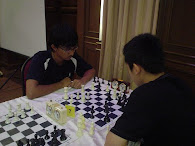Rybka 3
Computer Chess World Champion
Rybka 2 was formerly the world's strongest chess program, and clearly lead all ranking lists with ratings well above Elo 3000. Now Rybka 3 is here, with a dramatic improvement of at least 80 Elo points. Rybka, which translates to "little fish", is the shooting star of computer chess and the reigning world champion, having won its title in Amsterdam 2007. Now it is available in the drastically improved version 3.0 and under the ChessBase-Fritz interface. It includes exciting new analysis functions you will not find in other programs.
Today the main use of chess software is interactive analysis. Rybka's superior playing strength helps you to quickly assess a position. But analysis with Rybka 3 is much more than just evaluations and best moves. In the user interface designed by ChessBase, Rybka 3 introduces several ground-breaking new analysis features:
Monte Carlo Analysis in Rybka 3: yields precise evaluations by playing thousands of ultra-fast games in a few minutes in a given position. This is very much like using game result statistics, something human players do when choosing their opening variations. Monte Carlo Analysis can be used in any position, but generally it's most useful in two types of positions:
1) Endgames. Many engines often give high scores to drawn endgames (and sometimes low scores to winning ones). Monte Carlo recognizes fortresses and other no-progress situations. It's also good in Rook endgames, which are another computer problem.
2) Positions. There are games where one side has made a big material sacrifice for slow compensation (i.e. not just tactics). For instance you can find lots of piece sacrifices in famous Grandmaster chess games which no computer will correctly appreciate - but which Monte Carlo gets right.
Interesting: in the starting position the Monte Carlo Analysis gives a 52.8% win probability for White
Sampled Search in Rybka 3: gives detailed information about the search process, showing scores and alternative moves in the main line. This is helpful when the program searches for a long time in one position. It lets the users see how the engine is thinking and making its decisions.
Note that in in the live search you can see that the Rybka engine is working on Kasparov's famous 30.Rxb7 sacrifice, which has not turned up in the engine window yet (it will become the main variation after the next iteration). Note too that the square Chess Informant symbol behind certain moves means that these are forced.
Singular Moves in Rybka 3: are annotated graphically. This indicates situations where only one clearly best move exists.
Look for win in Rybka 3: whenever you feel that there should be a forced win in a position you can explicitly ask for it. Rybka then searches for a decisive move, considerably faster than in normal analysis.
New high-resolution 3D Staunton pieces in Rybka 3
Persistent Hash in Rybka 3: Rybka can save its hash tables between analysis sessions to preserve valuable information already accumulated in the search tree.
The author of Rybka, Czech-American International Master Vasik Rajlich, has implemented an extraordinary understanding of dynamic factors into his program. This often results in long-term pawn or exchange sacrifices and an active positional playing style resembling human chess. Rybka scores well in all types of situations but dominates especially in asymmetric positions which arise e.g. from Sicilian systems.
The success of the program stems from dedicated team work: IM Iweta Rajlich, rated 2417, is the main tester; Jeroen Noomen contributes opening theory and tournament preparation; IM Larry Kaufman develops positional algorithms.
The Rybka 3 opening book is a high-class compilation of opening theory. It was developed for the world's strongest chess program Rybka 3 and will maximize the program's playing strength. The choice of variations in the book is well suited to the style of the program, and the book has been fine-tuned and checked in thousands of games.
The Rybka Book has high value outside computer chess. It reflects the state of current opening knowledge as played in master, correspondence and 100,000 top computer games (up to June 2008). And this is only the starting point: the value of the book lies in its deep original analysis and move choices, which lead to a re-evaluation in many critical points of modern theory. This makes it useful for tournament and correspondence players alike.
The book contains a lot of computer-checked analysis never published anywhere before. The author of the Rybka 3 book is Jeroen Noomen, one of the world's leading experts in computer opening theory. Jeroen Noomen has been on the Rybka team since the very start, and his preparation is used in all official events, including the World Championship 2007 which Rykba won. In his long career as an opening analyst he has achieved many fine novelties in top computer chess events. Number of positions in the Rybka 3 book: 3,387,966. Size 260 MB. The book runs on any recent ChessBase software.
Note that Rybka 3 includes a database of one million games, and that the purchase of the program entitles you to one year of access to the chess server Playchess.com. Rybka 3 is a UCI engine, with 32 and 64-bit versions included in the package. Rybka can be made the default engine in ChessBase 10.
System requirements: Minimum: Pentium 300 MHz, 64 MB RAM, Windows Vista or XP (SP 2), DVD ROM drive, Windows Media Player 9. Recommended: Pentium IV 2.2 GHz or higher, 256 MB RAM, Windows Vista, GeForce5 or compatible graphics card with 64 MB RAM or higher, 100% DirectX compatible sound card, Windows Media Player 9, DVD ROM drive.


0 comments:
Post a Comment